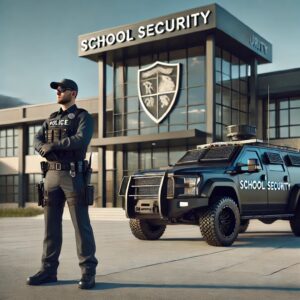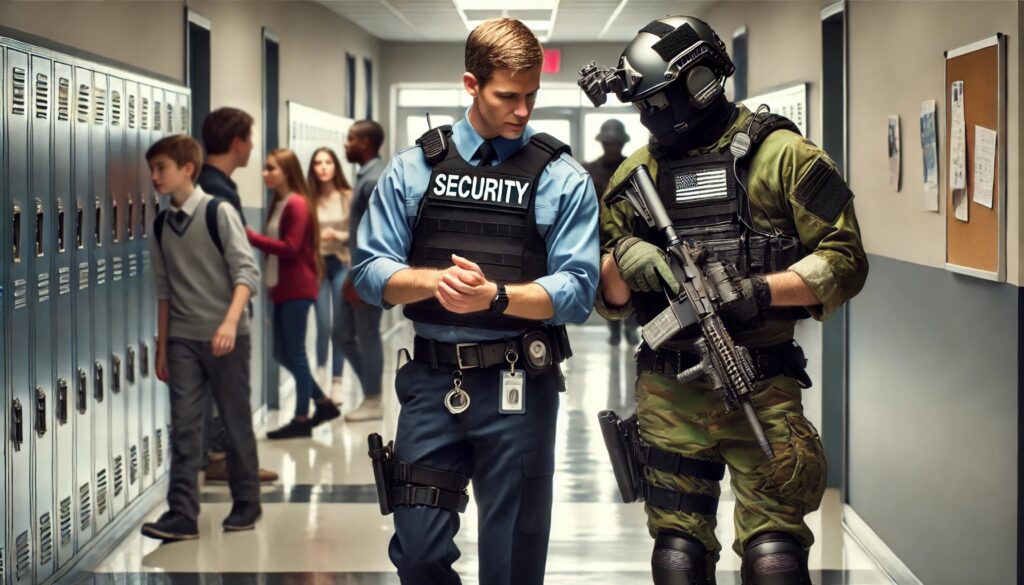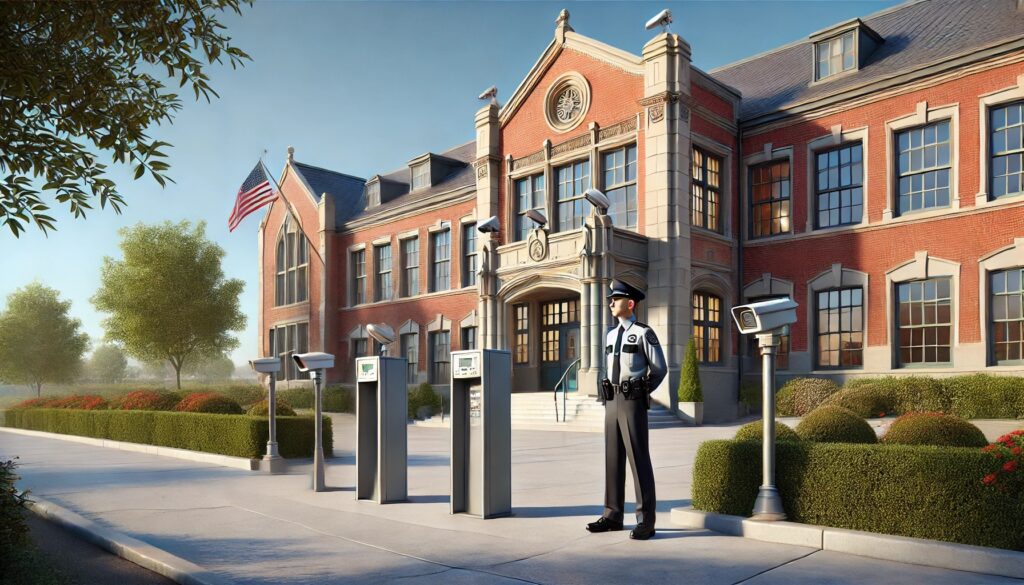
When it comes to school security, one simple principle guides us: Not Our Kids. Every school must take proactive measures to create an environment that not only protects students but also deters potential attackers by projecting strength and preparedness. Schools should be hard targets—places that look impenetrable and resilient, leaving anyone contemplating violence to think, Not here. Not these kids.
This blog explores how schools can achieve the highest level of safety by implementing visible, effective security measures. From professional security guards to state-of-the-art equipment and partnerships with industry experts, let’s dive into what it takes to make a school feel—and appear—secure.
Why a Strong Security Presence is Essential
A visible security presence is one of the most effective ways to deter potential threats. Schools that look well-guarded and prepared discourage attackers, who often target perceived vulnerabilities. The message a strong security presence conveys is clear: This school is ready, and any attack will be met with swift resistance.
This isn’t just about appearances—it’s about building trust among students, parents, and staff. A school with robust security measures ensures that everyone on campus feels safe, fostering an environment where learning can thrive.
The Building Blocks of Effective School Security
To create a secure and deterrent-rich school environment, several components must come together:
1. Highly Trained Security Guards
A uniformed security guard is more than just a deterrent—they are the first line of defense. Visible, professional, and trained guards create an immediate sense of safety. Security personnel should be trained in de-escalation, emergency response, and communication with students, staff, and local law enforcement.
2. Tactical Security Vehicles
A professionally lettered security vehicle parked outside a school sends a powerful message. These vehicles serve as both a deterrent and a rapid response tool, showing that the school is prepared for any situation. Tactical vehicles branded with “School Security” reinforce the seriousness of the school’s commitment to safety.
3. Secured Entry Points and Perimeter Control
Visible barriers like fencing, gates, and secure entry points with buzz-in systems make it clear that access to the school is strictly controlled. Add surveillance cameras and motion detectors to monitor every entry point and create a robust perimeter defense.
4. State-of-the-Art Surveillance Systems
Modern security systems, including high-definition cameras, AI monitoring, and real-time alerts, provide constant oversight of the campus. The visible presence of these systems ensures that any suspicious activity is detected and addressed immediately.
5. A Culture of Preparedness
Security isn’t just about tools and personnel; it’s about mindset. When staff and students are trained in emergency response protocols and security drills, they become active participants in campus safety. This readiness is noticeable even to outsiders, making the school feel organized and vigilant.
Partnering with Experts for Tailored Solutions
Creating a secure campus requires more than generic solutions—it demands a customized approach. Security experts like Matt Pasquinilli specialize in school safety, offering insights into how to design and implement security measures tailored to each school’s unique needs. From evaluating vulnerabilities to training staff, partnering with experienced professionals ensures every layer of security is addressed.
Deterrence is Key: Projecting a Hard Target
The ultimate goal of visible security measures is deterrence. Attackers often scout targets in advance, looking for schools that appear easy to access. A campus with robust security infrastructure, visible personnel, and a culture of preparedness sends a clear message: This is not the place.
By projecting strength, readiness, and vigilance, schools make it clear that any attempt to breach their defenses will fail.
The Balance Between Security and Learning
While visible security is essential, schools must also balance safety with creating a welcoming learning environment. Security measures should never make students feel like they are in a fortress, but rather instill a sense of confidence and safety.
This balance can be achieved by maintaining open communication with parents, students, and staff. Explain the purpose of security measures and emphasize their role in keeping everyone safe, not just reacting to threats.
Taking Action to Secure Your School
If your school’s current security plan doesn’t send the message Not Our Kids to potential attackers, it’s time to rethink your approach. Start by:
• Conducting a comprehensive security assessment.
• Implementing visible deterrents like guards, vehicles, and surveillance systems.
• Training staff and students to respond to emergencies confidently.
• Partnering with security experts to develop tailored solutions.
Conclusion: Safety Through Strength
School security isn’t just about having measures in place—it’s about creating an environment where students feel safe and threats are deterred before they even arise. By investing in visible, effective security systems and building a culture of preparedness, schools can ensure they protect what matters most: their students.
Let’s work together to make every school a hard target, sending the message loud and clear: Not here. Not our kids.
#SchoolSecurity #StudentSafety #HardTarget #VisibleDeterrence #SchoolLeadership #SafetyPreparedness #MattPasquinilli #SecureSchools





